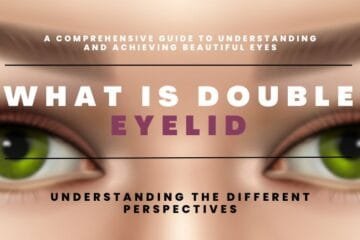What are The Best Treatments To Fix Your Gummy Smile?
Do you know when to call a smile gummy? People have so many questions about the gummy smile. This article will throw light on all the questions related to the treatment of a good smile. Let’s dig deep into the topic. “A beautiful smile is the best dress and permanent makeup”
There are several effective treatments available to fix a gummy smile. Orthodontic treatment, such as braces or clear aligners, can correct misaligned teeth and jaw. Crown lengthening is a procedure that reshapes the gum tissue to expose more of the tooth, resulting in a less gummy appearance. Gingivectomy is a surgical procedure that involves removing excess gum tissue to create a more balanced gum line. Another surgical option is lip repositioning, which repositions the upper lip to cover more of the gum tissue. Contact a dental expert to go through the best course of action for your unique circumstance.
But, do you hide your smile? Because gums look so much while laughing? If this thing is bothering you, then we are going to discuss with you today the best ways to fix it.
What is Gummy Smile?
A Gummy smile is a common dental condition characterized by the excessive display of gum tissue when a person smiles. While the amount of gum tissue that shows when a person smiles can vary, a gummy smile is often defined as displaying more than 2 millimeters of gum tissue above the upper teeth.
There are a number of factors that can contribute to a gummy smile. Some people simply have more gum tissue than others, while others may have a shorter upper lip, which exposes more gum tissue when they smile. The position of the teeth can also play a role, as teeth that have not erupted fully or are malpositioned can contribute to the appearance of a gummy smile.
The gum tissue lies between the teeth and the upper lip. If it shows excessively while smiling, it’s a gummy smile. Clinically, we call it excessive gingival display. It’s otherwise called ‘exacerbated gingival display’ or ‘gingival excess’. A Gummy smile is a condition where an individual’s gums are prominently visible when they smile.
This might be for a variety of reasons, such as Gummy smiles can be caused by excessive gum tissue, which some people have more of than others.
- Short teeth: Teeth that are shorter than normal can also make gums more visible.
- Hyperactive lip muscles: On occasion, the muscles that move the upper lip might be too active, which causes the lip to rise higher when smiling.
While a gummy smile is not a serious medical condition, it can cause individuals to feel self-conscious about their smile. To solve this problem, fortunately, there exist remedies.
10 percent of adults aged between 20-30 years have a gummy smile. Moreover, a gummy smiles occurs more in females compared to males.
There is no proper definition of a gummy smile. People may call your smile gummy based on:
- Your lip movement while smiling
- Shape and height of your teeth
- Jaw angle compared with the remaining parts of your face
A gummy grin can influence someone’s self-confidence and self-esteem even though it is typically seen as a cosmetic issue that has little bearing on oral health. Many people who have a gummy smile feel self-conscious about their appearance and may avoid smiling or laughing in public.
How Do You Know If You Have A Gummy Smile?
You may have a gummy smile if you feel that your gums are larger than normal or cover a significant portion of your teeth. This can also happen if your teeth appear shorter than usual or are not fully visible due to excess gum tissue. Additionally, if your gum line is uneven and appears to be higher than normal, it may contribute to the appearance of a gummy smile. Another factor could be an overly prominent upper lip that lifts too high when you smile, which can expose more of the gum tissue.
Should Your Gums Show When You Smile?
Yes, it is normal to display gums when you smile. But there is a limit. In a normal smile, only 2 / the 3rd to 3 / 4th teeth are visible. And, your lips cover the remaining part of the teeth. For females, a normal amount of visible gums should be only 1-2mm. In case your gum part shows more than 2-3 mm when you smile or speak, that’s a gummy smile.
How Come My Teeth Don’t Show When I Smile?
Are your teeth not visible when you smile? There might be four issues with this.
- Limited upper lip mobility – On average, people can move 6mm-8mm from the rest position to a complete smile. In the case of a gummy smile, there is a significant difference in mobility measurements.
- Retroclination of teeth – By checking someone’s lateral profile, you can detect how much support the upper lip has. You can also check if the maxillary anterior ratiocination.
- Small tooth size – Some people have small teeth naturally. Hence, they can have minimal tooth display.
- Long upper lip – Last but not least, is the length and aspect of the upper lip. The normal upper lip length for females is between 20- 22mm. For males, it is 22–24mm. In the case of a gummy smile, there will be too much space between the base of the nose and the bottom of the upper lip.
Before talking about gummy smile treatment, let us know its causes.
What Causes a Gummy Smile?
A gummy smile, also known as an excessive gingival display, occurs when a person’s smile reveals an excessive amount of gum tissue above the upper teeth. Despite the fact that this ailment is not a medical concern, many people experience self-consciousness and seek therapy to enhance their looks.
Here are some common causes of a gummy smile:
- Genetics: Some people are simply born with excessive gum tissue that shows when they smile.
- Hyperactive upper lip muscle: The muscle that controls the movement of the upper lip can sometimes be too strong, causing the lip to lift too high when smiling.
- Short upper lip: A shorter-than-usual upper lip can expose more of the gum tissue.
- Misaligned teeth and jaw: The gums may look more pronounced when the teeth are too short or the jaw is too long.
- Gum tissue overgrowth: Certain medications or medical conditions can cause an overgrowth of gum tissue, resulting in a gummy smile.
- Improper tooth eruption: When teeth erupt improperly, they can cause an uneven gum line, making the gums appear more prominent.
Still, there are several queries in people’s minds about the cause of a gummy smile. Our experts are ready to answer them one by one. If you are self-conscious about your gummy smile, consult with a dental professional to discuss the best treatment options for you.
Is Gummy Smile Genetic?
A 2014 preliminary investigation study shows that a gummy smile is genetic. It runs in your family. A gummy smile proves to be genetic, especially in the case of people whose gums cover most of their teeth surface.
Can An Overbite Cause Gummy Smile?
Yes. An overbite always involves a patient’s upper front teeth. It will make your lower teeth bite into the roof of your mouth. Hence, this overbite leads to a gummy smile followed by a lip protrusion.
How about Too Much Gum Tissue?
Some people do have an overgrowth of gum tissue during the eruption of permanent teeth. Moreover, gum infection may cause inflammation. Swelling that arises due to inflammation will cover most parts of your teeth.
But, it is possible to prevent gummy smiles by following proper brushing and flossing habits.
Now that you have clearly understood the causes of a gummy smile, right? Let us go through various treatment methods.
How Do You Fix a Gummy Smile?
Can Gummy Smile Be Corrected?
Are you wondering whether it is possible to fix your gummy smile? Thanks to medical science as there are several nonsurgical and surgical methods to create a proper ratio of gums to teeth.
There are several benefits of undergoing gummy smile treatment:
- Start showing more teeth evenly and symmetrically
- Improve the fullness of your upper lip
- Your teeth will become the focal point of your smile
- Enhance your confidence level to smile
- Develop a natural and relaxed smile
So, isn’t the right time to undergo gummy smile treatment? Let us go through the surgical and nonsurgical methods in detail.
What is the Gummy Smile Surgical Treatment?
Surgical treatment options for gummy smile correction involve altering the gums or jawbone to achieve a more proportionate smile. Here are some of the most common surgical treatment options for gummy smile:
- Gum lifting/gum contouring/Crown lengthening procedure: This is known as a scalpel or laser gingivectomy surgery. This procedure involves the removal of gum tissue or bone to display your teeth. It is a sculpting procedure that helps to even out the gum line. This makes the teeth appear longer and reduces the amount of gum tissue visible when smiling. Crown lengthening surgery is often performed under local anesthesia and can be completed in a single visit to the dentist. Just a scalpel might be enough to reshape the gums. But the surgeon uses a laser since it assures minimum bleeding. This procedure is comparatively quick and painless. Its downtime and recovery are also fast. According to the 2014 research article, it is an effective option that provides a high degree of satisfaction.
- Lip lowering procedure: This is called lip repositioning surgery or reverse vestibulopathy. This procedure involves the removal of a small strip of tissue from the inward portion of the upper lip. Next, the surgeon sutures the cut to the gums. Hence, your lip will not move up too much while smiling. Thus, your gummy smile issue will get resolved at the level your surgeon positioned it. Moreover, you will find a fuller upper lip after undergoing this surgery. It will take nearly 2 weeks for recovery. You will start finding significant improvement 4 weeks after the surgery. This procedure is safe with minimum side effects. According to the 2019 case report, patients were still happy with this surgical outcome even after two years.
- Corrective jaw surgery: The surgeon will perform this procedure only in severe cases. This procedure involves the repositioning of the upper jaw. Hence, it helps in balancing the length of the lower and upper jaws. This procedure, unlike others, requires general anesthesia. Furthermore, this surgery involves both orthodontist and a maxillofacial surgeon as well. By taking repetitive scans, the surgeon can determine the location where the jaw is grown too far.At times, you will have to wear braces or other orthodontic devices. They will make sure your teeth and arches are aligned properly.
- Orthognathic Surgery: Repositioning the upper jaw during orthognathic surgery, also referred to as corrective jaw surgery, is a more intrusive process. This procedure can correct a gummy smile caused by a protruding upper jaw, malocclusion, or other jaw-related issues. Orthognathic surgery is typically performed under general anesthesia and requires several weeks of recovery time.
- Lip Repositioning Surgery: This procedure involves adjusting the position of the upper lip to cover more of the gum tissue, resulting in a less gummy smile. This procedure is typically performed under local anesthesia and can be completed in a single visit to the dentist.
- Gingivectomy: A gingivectomy is a surgical procedure that involves removing excess gum tissue from around the teeth to reduce the amount of gum tissue visible when smiling. This procedure is typically performed under local anesthesia and can be completed in a single visit to the dentist.
- Laser Gum Contouring: Laser gum contouring is a minimally invasive procedure that involves using a laser to remove excess gum tissue. This procedure is typically used for mild to moderate cases of gummy smiles and can be completed in a single visit to the dentist.
The right surgical procedure for correcting a gummy grin will rely on a number of criteria, including the severity of the disease, the underlying reason, and the patient’s preferences. Every patient has unique requirements and objectives, and this must be kept in mind. A qualified dental professional can assess your individual case and recommend the best treatment option for you.
Read This Article Help You for Jawline Improvement: 5 Best Non-surgical Treatment For Jawline Correction
Does Gummy Smile Surgery Hurt?
The level of the side effects depends on the expertise of the surgeon. You can expect several side effects like pain and the risk of tooth loss over time. Your teeth might become sensitive to cold and hot temperatures.
However, you may not experience pain during the procedure. Only when the local/general anesthesia wears off, you will likely experience pain and discomfort. Your surgeon will anyway prescribe pain management medications.
All these side effects will lessen day by day. You will be able to return to regular eating as well as oral hygiene habits.
How Can I Fix My Gummy Smile without Surgery?
If you want to avoid surgery but are unhappy with your gummy smile, there are several non-surgical treatment options that are available. They consist of:
- Botox injections: By temporarily paralyzing the muscles that elevate the upper lip, botox can reduce the appearance of a gummy grin. This procedure just requires one dental appointment and is quick and secure. The benefits of Botox injections, however, are only present for three to six months.
- Dermal Fillers: By adding volume to the upper lip, dermal fillers can help cover more gum tissue and provide a less gummy grin. This procedure just requires one dental appointment and is quick and secure.
- Lip Repositioning: Lip repositioning is a non-surgical surgery that uses sutures to move the top lip’s position, giving the smile a less gummy appearance. This procedure just requires one dental appointment and is quick, safe, and painless. However, the effects of lip repositioning are not as dramatic as surgical options and may not be suitable for everyone.
- Gum Contouring: Gum contouring is a non-surgical procedure that involves reshaping the gum line to expose more of the tooth surface and reduce the amount of gum tissue visible when smiling. This treatment is safe, quick, and can be completed in a single visit to the dentist. However, the effects of gum contouring are limited to mild cases of a gummy smile.
It is important to note that non-surgical treatment options may not be as effective as surgical options for correcting severe cases of a gummy smile. A qualified dental professional can assess your individual case and recommend the best treatment option for you.
Will TAD Really Work?
If you don’t want to undergo cosmetic surgery, TAD may be right for you. TAD refers to a Temporary Anchorage Device. This device helps in pulling your teeth in the right position which may reduce your gummy smile. They are less invasive and less expensive.
TADs are tiny screws implanted into your mouth bone. Just the local anesthesia is enough to administer while implanting these TADs.
However, it’s your surgeon who decides whether it’s the right solution for you. Depending on the cause of your gummy smile, the surgeon may recommend them.
How do you get rid of a gummy smile with Botox injections?
Do you have a hyperactive upper lip? Botox may be the right choice then. Your doctor will inject Botox into the upper lips.
This procedure will freeze the muscles around the upper lip. Moreover, it will prevent upper lip contraction while smiling. Hence, only less gum will be visible. It is comparatively less expensive. And you can see the results within 48 hours. Within a week, you will find fully visible results.
There are two drawbacks. This procedure is a quick short-term fix that lasts only for 3-4 months. Hence, you will have to undergo this procedure every few months. Another risk is your inexperienced doctor may inject too much Botox. In that case, your smile will look distorted.
If performed by the right doctor, this minimally invasive procedure proves to be safe. A 2020 research article shows that Botox injections are the right conservative and alternative method with high patient satisfaction.
Can Lip Fillers Fix a Gummy Smile?
Yes, of course. The use of lip fillers/dermal fillers is another way to fix your gummy smile. The doctor will inject hyaluronic acid or a gel substance namely Juvéderm into the upper lip. Lip filler injection helps in increasing the volume of your lips. Hence, it will reduce the amount of gum region. This procedure can also thicken your lips and improve their symmetry. Lip filler injections will take only 10 minutes. And, it will last between six months to one year. There is a chance of swelling within the initial 24 hours. However, it will settle quickly.
Lip fillers are often made with hyaluronic acid, a substance that exists naturally in the body and gives lips volume and plumpness. Lip fillers can assist increase the volume of the upper lip when injected into the area, which can help cover more of the gum tissue and produce a less gummy grin.
However, lip fillers are not specifically designed to treat a gummy smile and may not be effective for everyone. Gummy smiles can occasionally be brought on by underlying structural problems, such as an overactive upper lip muscle, which lip fillers cannot always treat.
According to the 2015 review article, this treatment is safe, cheap, less allergic, painless, and permanent with a lower risk of any complication.
Is it Possible to Treat a Gummy Smile Naturally?
Smile exercise
Following smile exercises can help in giving a little smile. Exercise therapists reveal that doing this exercise every day for 1-2 times per day may show improvement. The smile exercise involves 4 steps:
- Massaging the wings of the nose down along the corners of the mouth using the index finger. Continue for 30 seconds. This exercise will help in correcting the upper lip muscles if they are raised very high.
- Open your mouth. Next, hold the lips for 10 seconds. This exercise will help the lip muscles to cover more gums.
- Keep smiling. First, smile. Then, close your mouth. Next, open your mouth slightly. By doing so, the teeth will cover the gums. Hold for a minute. In case, if your smile still doesn’t cover the gums, press them with your fingers. This step will you to only have a little smile. And this won’t show more gums.
- Suck on the cheeks. By doing so, your mouth will look like a fish’s mouth. Hold for 30 seconds. This exercise will help in stretching the muscles around your cheeks and fix the smile.
Use of alternative drugs
Do you consume phenytoin? At times, drugs like Phenytoin may cause excess gum tissue formation. It is otherwise called gum hyperplasia. So, the doctor may recommend you stop these drugs and prescribe alternatives, in case this is the cause.
Scaling and polishing
Do you have poor oral hygiene? In that case, gum inflammation might be the cause of your gummy smile. Just have a few sessions of scaling, polishing, and deep cleaning. These procedures will reduce gum inflammation. Moreover, they will reduce the gum size as well.
Which Treatment for What Cause?
We explained about every treatment to fix a gummy smile. But you must be wondering which treatment is the right one, isn’t it? The choice of treatment depends on the cause of gummy smile development.
However, we will narrow it down by matching the appropriate treatments for each cause. Here it is:
- Longer upper jaw – lip lowering surgery or corrective jaw surgery
- The lip rises very high – lip lowering surgery or Botox
- Increased gum development over the teeth – Gingivectomy. Stop consuming phenytoin
- Gum inflammation – Scaling & polishing
How Much Does Cost For A Gummy Smile Correction?
Like any other dental procedure, the cost of gummy smile correction varies from patient to patient. It is because the price depends on the number of gums to be removed.
The cost will be lesser if the procedure involves only one or two teeth. In the case of the entire gum line, the price would be higher. But, the cost of gummy smile treatment in Delhi, NCR, India will be between Rs. 20000/- to Rs. 65000/-
Extra costs may include the following:
- Surgeon fees
- Location of dental clinic
- Consultation fees and follow-up visit cost
- Anesthesia and anesthetist cost
- Medication cost
The cost of gummy smile correction in Delhi, NCR varies depending on the treatment chosen and the severity of the case. When compared to dermal fillers, Botox injections can cost between INR10,000 and INR25,000 for each session.
In contrast to orthodontic treatment, which can cost anywhere between INR 50,000 and INR 2,50,000, gum contouring may cost between INR 20,000 and INR 1,000,000.
Crown lengthening, orthognathic surgery, and lip repositioning are a few surgical procedures that can range in price from INR50,000 to INR 5,000,000. The cost can vary based on the clinic, location, and experience of the dental professional. It’s crucial to speak with a licensed dental expert to decide on the best course of action and related costs for your particular situation.
Conclusion
In conclusion, there are various treatment options for a gummy smile, including surgical and non-surgical methods. While surgical treatments provide a permanent solution, non-surgical treatments are less invasive but may not be as effective for severe cases. Finding the ideal course of treatment for you requires consultation with a knowledgeable dental specialist. It’s your gorgeous smile that boosts your overall personality and self-confidence. Furthermore, this procedure will also prevent gum infection. So, no more delays! If you are having a gummy smile, do visit Care Well Medical Centre right away. It’s time to get an expert consultation from our skilled and highly experienced super-specialist doctors.














